Milton Caniff’s masterpiece debuted Oct. 22, 1934…
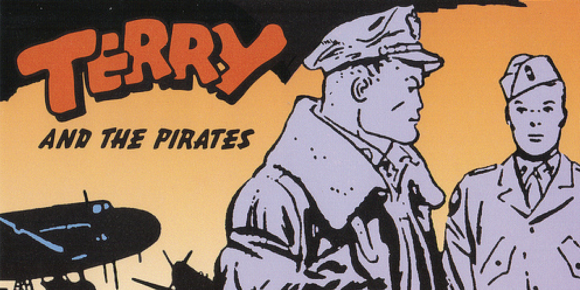
By PETER BOSCH
It was 90 years ago, on October 22, 1934, that young Terry Lee stepped off a ship in China, there to find out about a mine belonging to his grandfather. And from that humble start, Terry and the Pirates would win a daily readership of over 25 million, while its creator, writer and artist, Milton Caniff, spent 12 years making it into a newspaper comic strip that is now spoken of with the same reverence that is paid to Alex Raymond’s Flash Gordon and Hal Foster’s Prince Valiant. And Caniff’s cinematic art style, developed over time, would inspire several generations of future artists, including Jim Aparo, Gene Colan, José Luis García-López, John Romita Sr. and Jr., Alex Toth, Jerry Ordway, Gil Kane, Al Williamson, and Doug Wildey.
Getting back to that first day in 1934, along with Terry was his adult friend and financer of the trip, Pat Ryan. In short order, they would be joined by a third member in their expedition, George Webster Confucius, aka “Connie,” whom they hired to be their interpreter. (Regrettably, Connie was the first of the Asian stereotypes readers would encounter in the strip.)

The first Terry and the Pirates daily strip, October 22, 1934
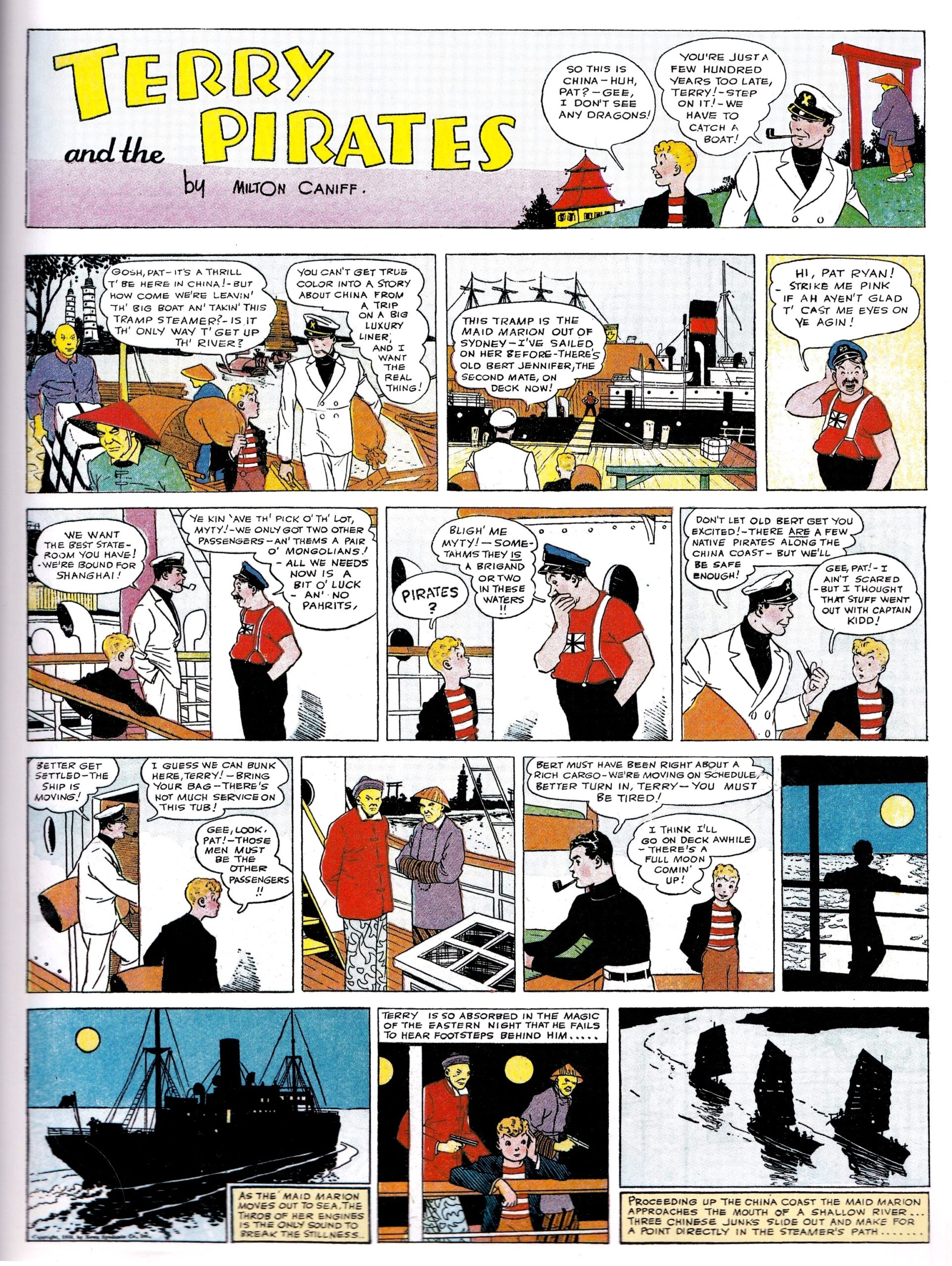
A color Sunday page followed on December 9, 1934
During the initial two weeks of the strip, Terry, Pat, and Connie became the target of unsavory criminals who had heard there was a treasure to be had in the mine. But these bad men were nothing compared to the strip’s most famous villain who would appear later, the most notorious female pirate in all of China — the Dragon Lady. (When she was introduced in the strip, she identified herself as Lai Choi San, who was a real female pirate in China in the 1920s and 1930s.)
The strip was off and running with some of the greatest supporting characters this side of Dick Tracy and Batman. In the final, sixth volume of their reprint series, The Complete Terry and the Pirates, IDW Publishing put together a 5-page pictorial of the major characters who had appeared in the strip during Caniff’s 12 years on it and, oh, what an incredible group it was!
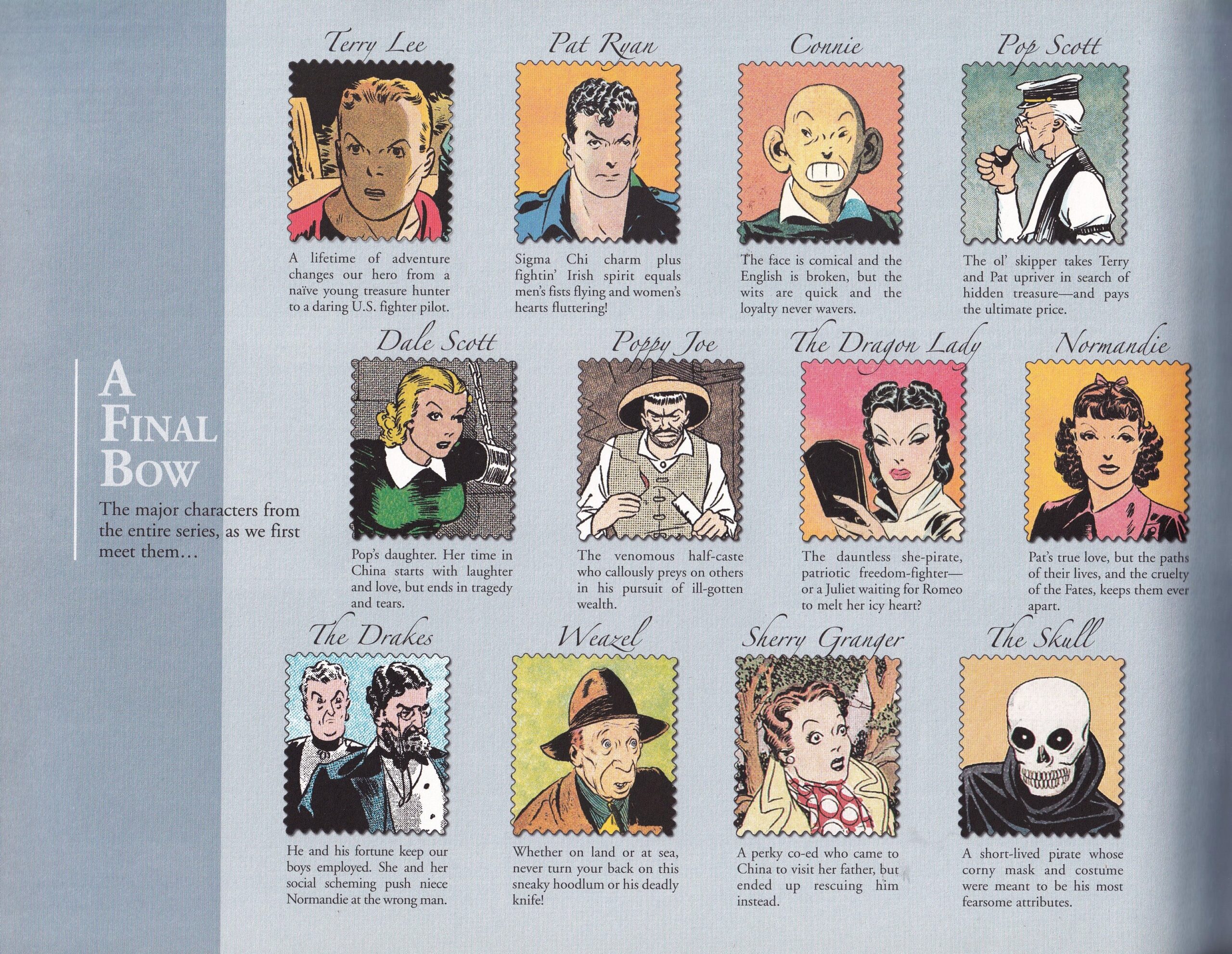
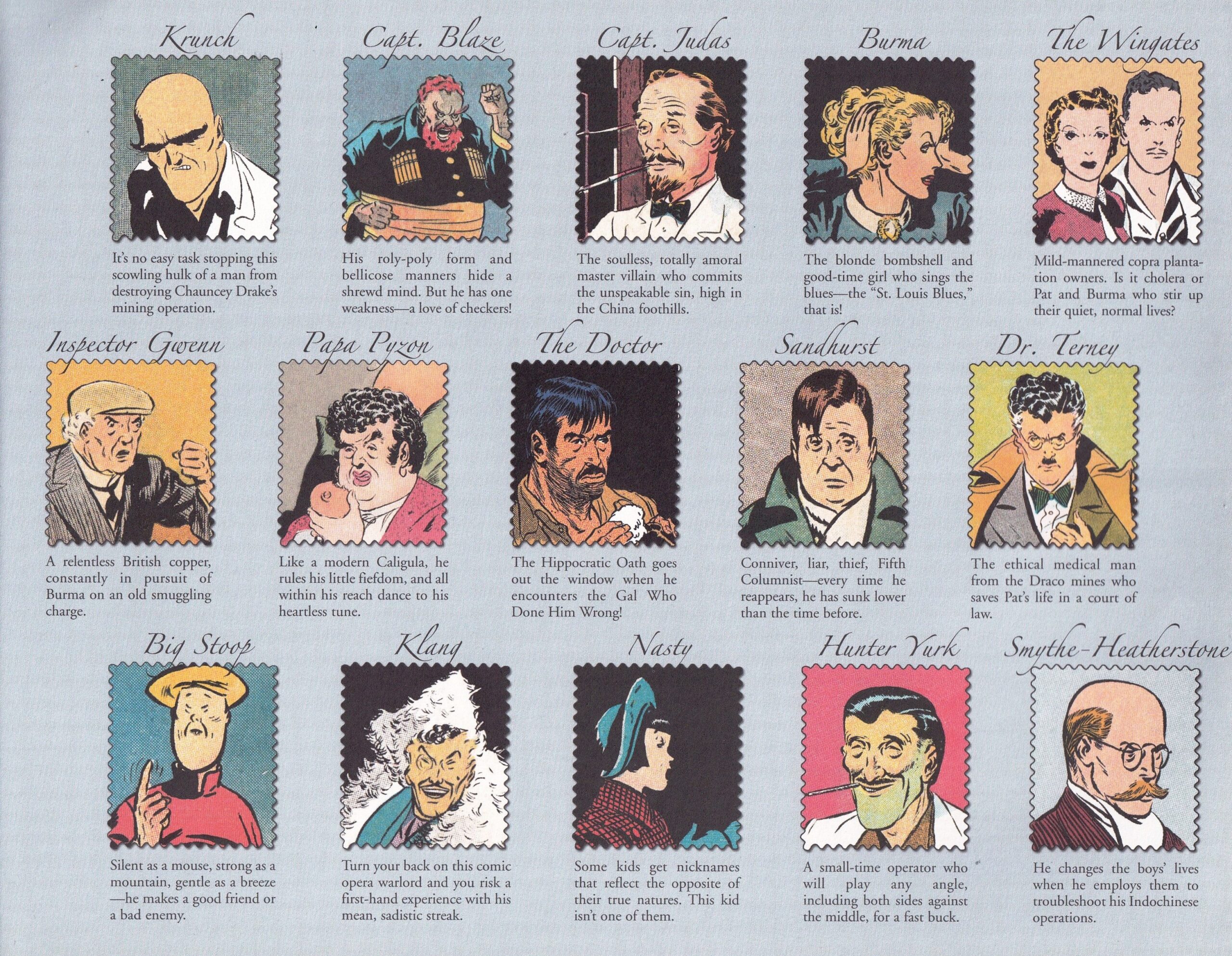
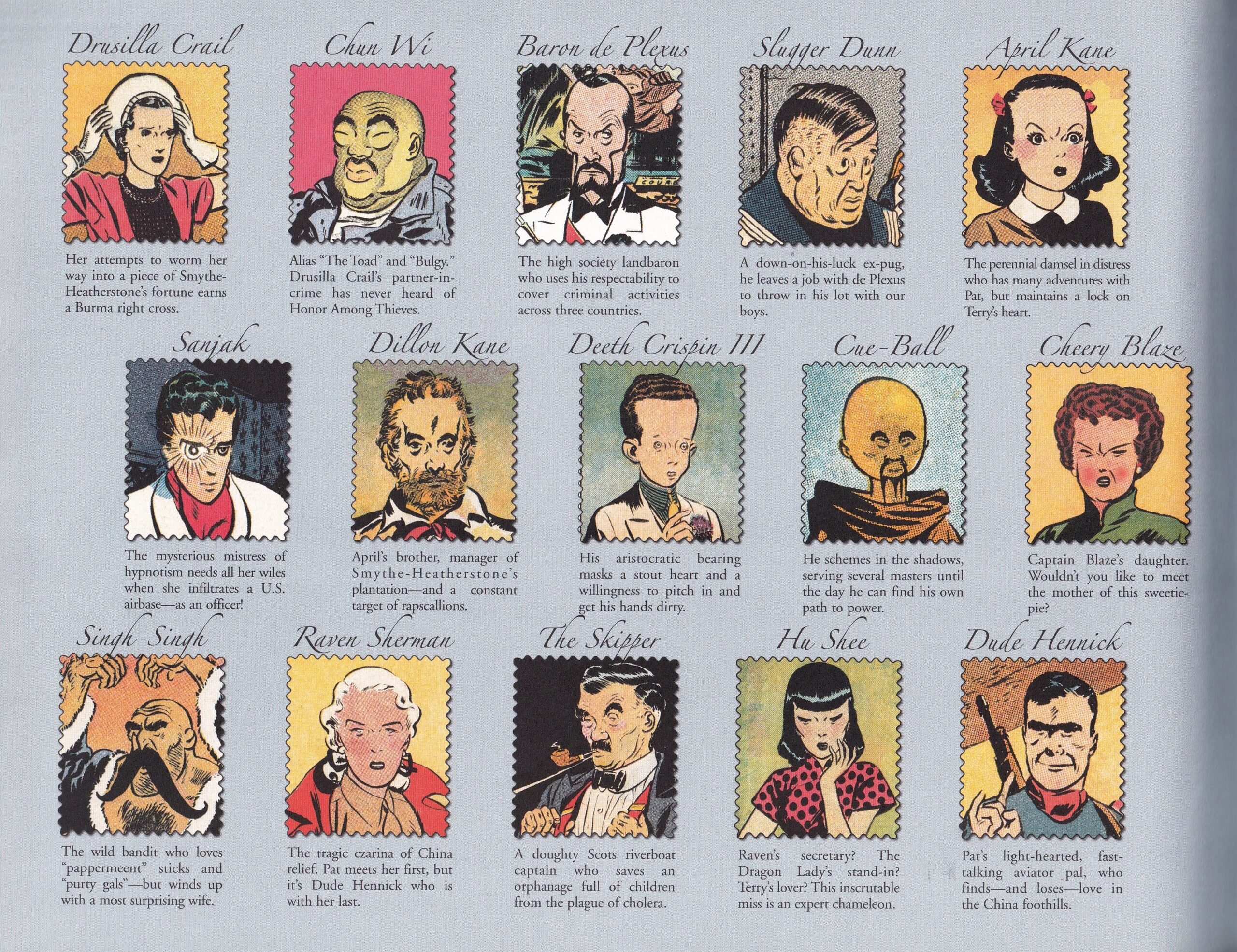
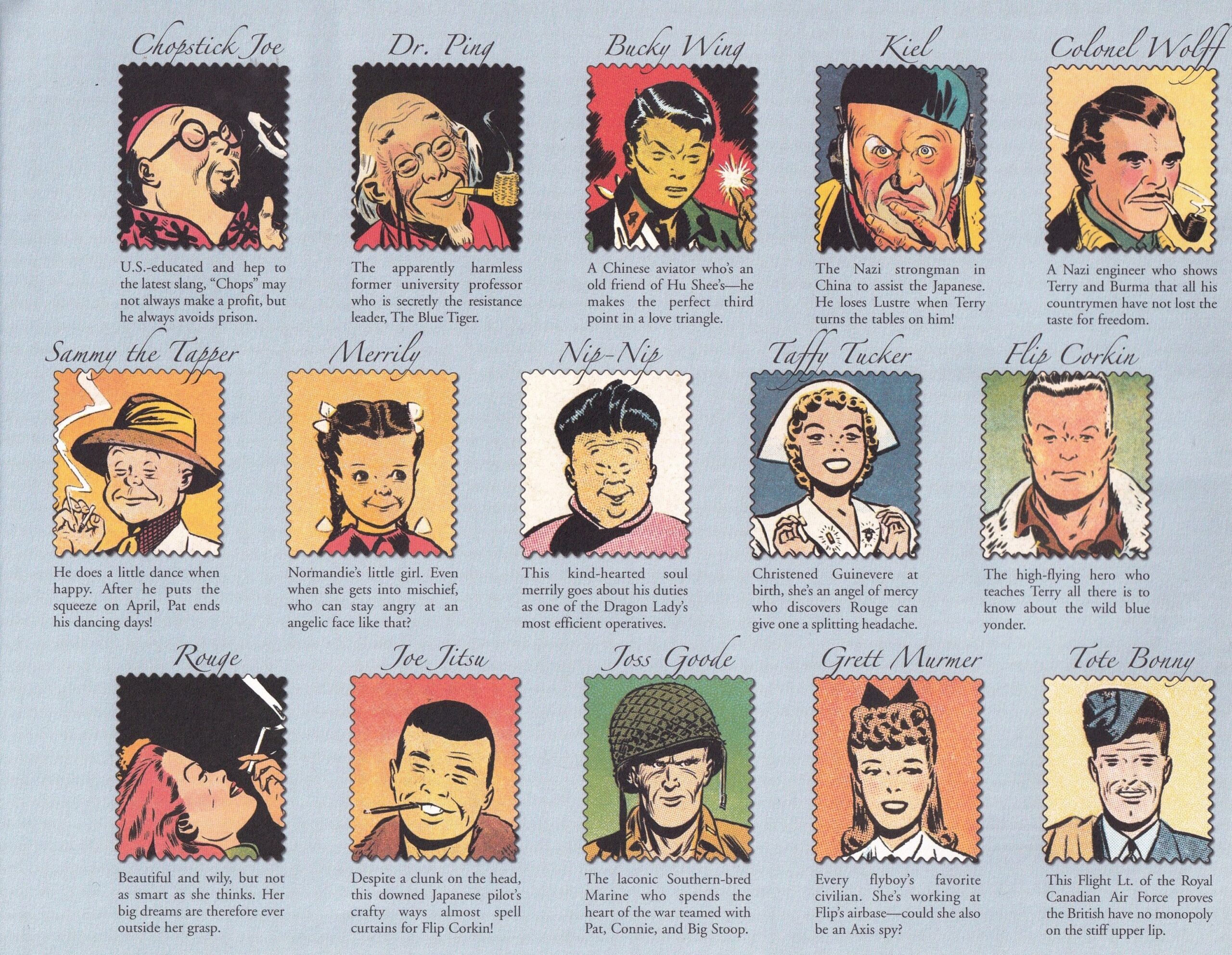
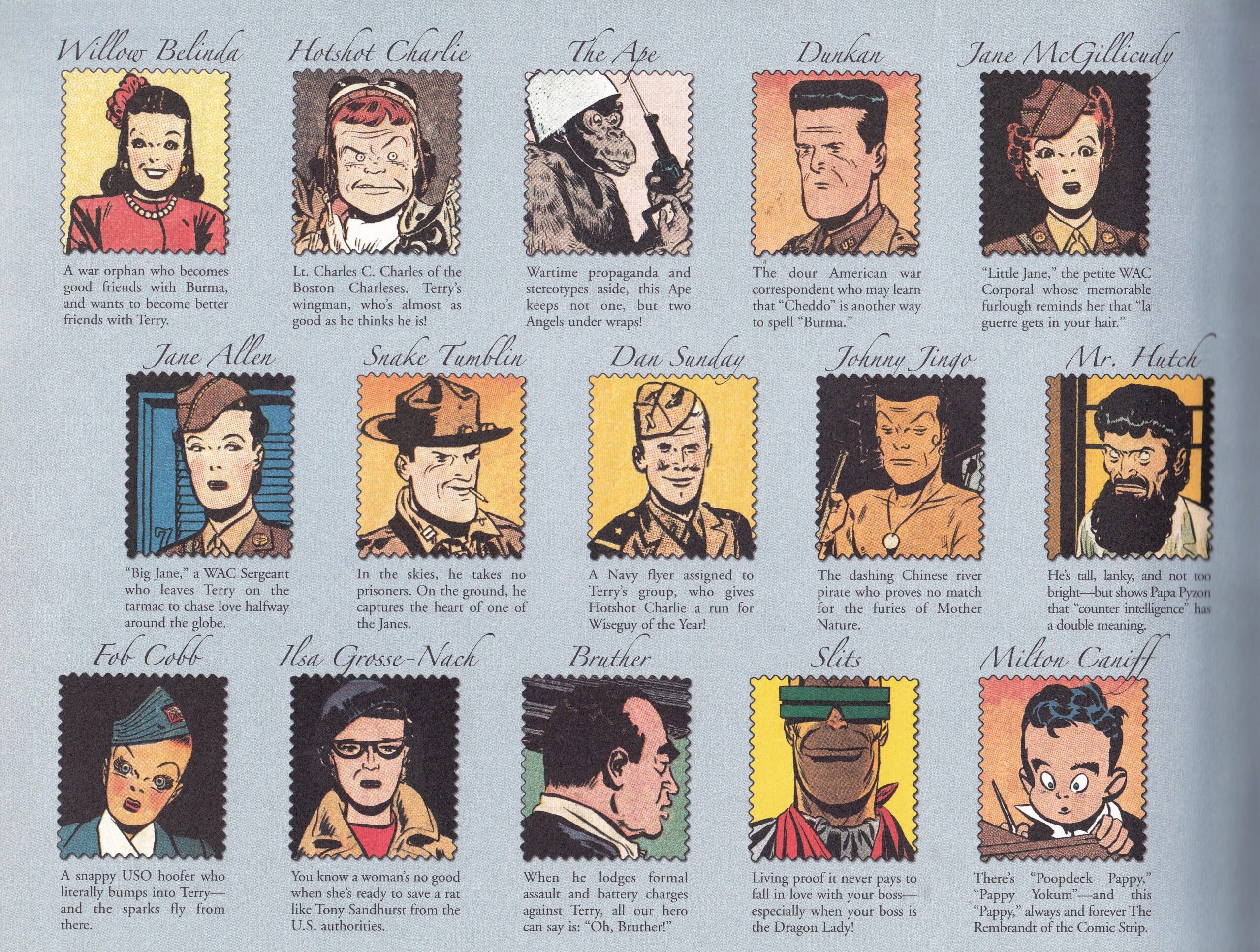
It didn’t take long before the strip’s popularity had sponsors come calling for a radio program based on it. In 1937, Terry and the Pirates became a hit show for kids and continued on and off until 1948.
(Terry and the Pirates had one of the noisiest but most atmospheric openings on radio.)
In July of 1937, Japan invaded China in devastating numbers, beginning the Second Sino-China War. During the time of Japanese aggression, and then through World War II from 1941 through 1945, millions of Chinese civilians and military personnel were killed. Caniff had been planning on taking the strip in a more serious direction for some time but this major war would prove to be the pivotal point in which the strip had to change. And in the strip at the end of March 1938 (but written and drawn earlier) it was the Dragon Lady who went from villainess to becoming a protector of her country, leading her followers against the Japanese.
The Terry and the Pirates strip was entering its greatest period. And it was in this time that Caniff became one of the three most influential comic strip artists in America. While Foster drew beautiful pictures of the days of King Arthur, and Raymond brought shine and glamor to the planet Mongo, Caniff drew the nitty-gritty of real life, with many a soldier trodding through mud, day after day.

September 1, 1939 daily strip
One unfortunate misstep in the greatness of the strip occurred in 1940 when Columbia Pictures turned it into a 15-chapter movie serial. Like many other comic- and pulp-related characters that Columbia adapted to the big screen, they got it very wrong. The name of the character was about all that made it on film. The studio, known for its cheapness under head Harry Cohn, turned out a chapter play that had Caniff walking out of the theater screaming after seeing the first episode.

But the strip did carry on — and with a shock to its many readers. In 1941, one of his women characters, Raven Sherman, a benefactor of homeless Chinese displaced by Japan’s forces, is thrown from the back of a speeding truck by a villain in order to slow the pursuit by Terry in a following vehicle. She lands on her head and face and, following a devastating last few moments, dies.
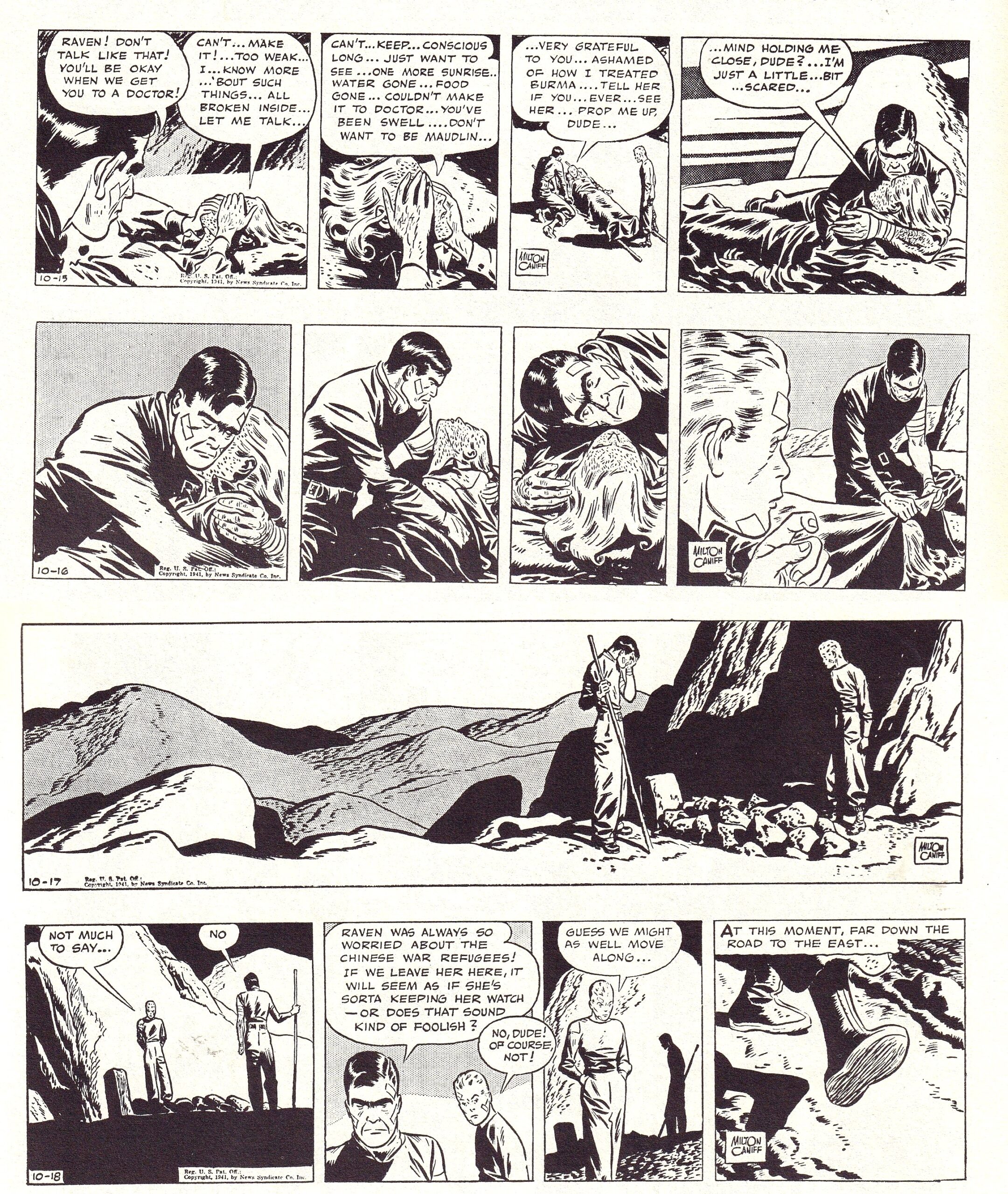
The death of Raven Sherman, October 15-18, 1941
World War II saw China facing many deaths of her own and becoming a full ally of the United States and other members of the free world in their fight against the Axis Powers (Hitler, Hirohito, and Mussolini). Milton Caniff and Terry and the Pirates kicked everything into high gear to help win that fight.
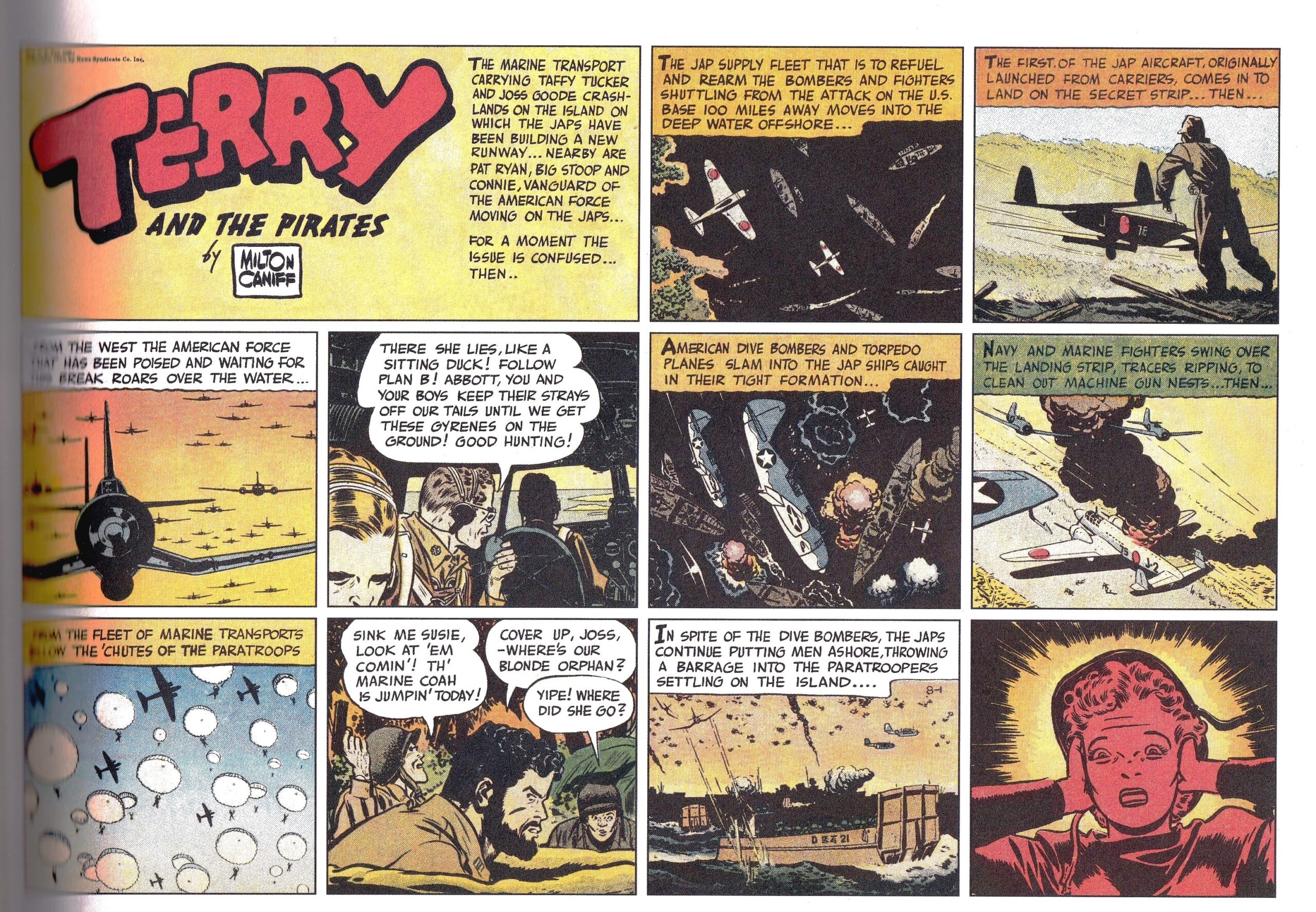
August 1, 1943
Side note: With the war, Caniff had to become a master of minutiae regarding our armed forces. If he didn’t get it right, he would quickly hear from his service readers.
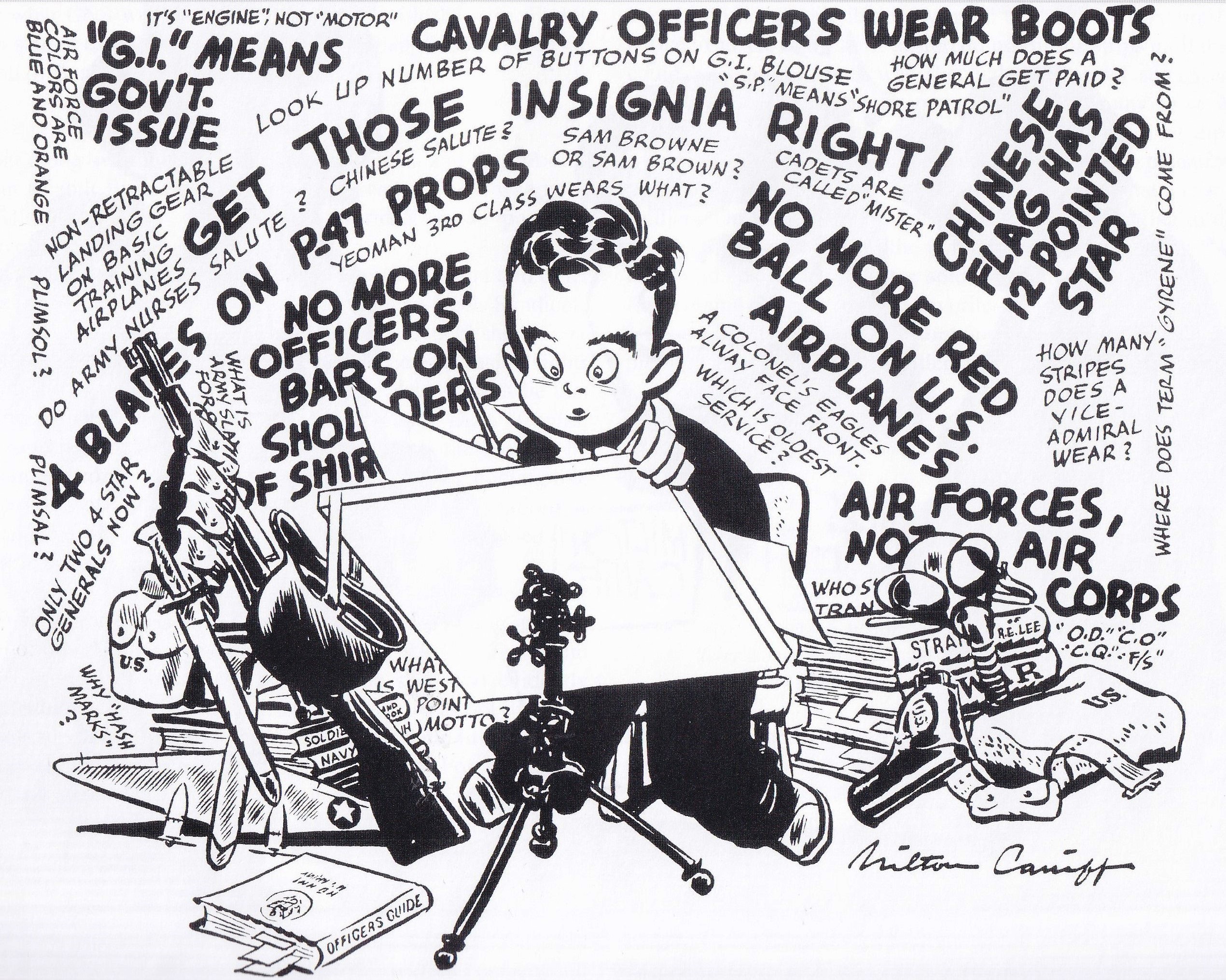
Caniff in a self-drawn humorous portrait, surrounded by actual props in his office
In a break from other comic strips, Terry Lee actually grew up in the strip over the years and, in 1943, earned his pilot’s wings, something he wanted very much, but Caniff showed it wasn’t all glory.

October 12, 1943
Following Terry’s acceptance into the Air Force, he was instructed on how he should respect those who put him in the air. The below strip’s writing was so meaningful to all the different areas of the American military service that it not only became the most reprinted of all the Terry strips, its text was read into the Congressional Record.
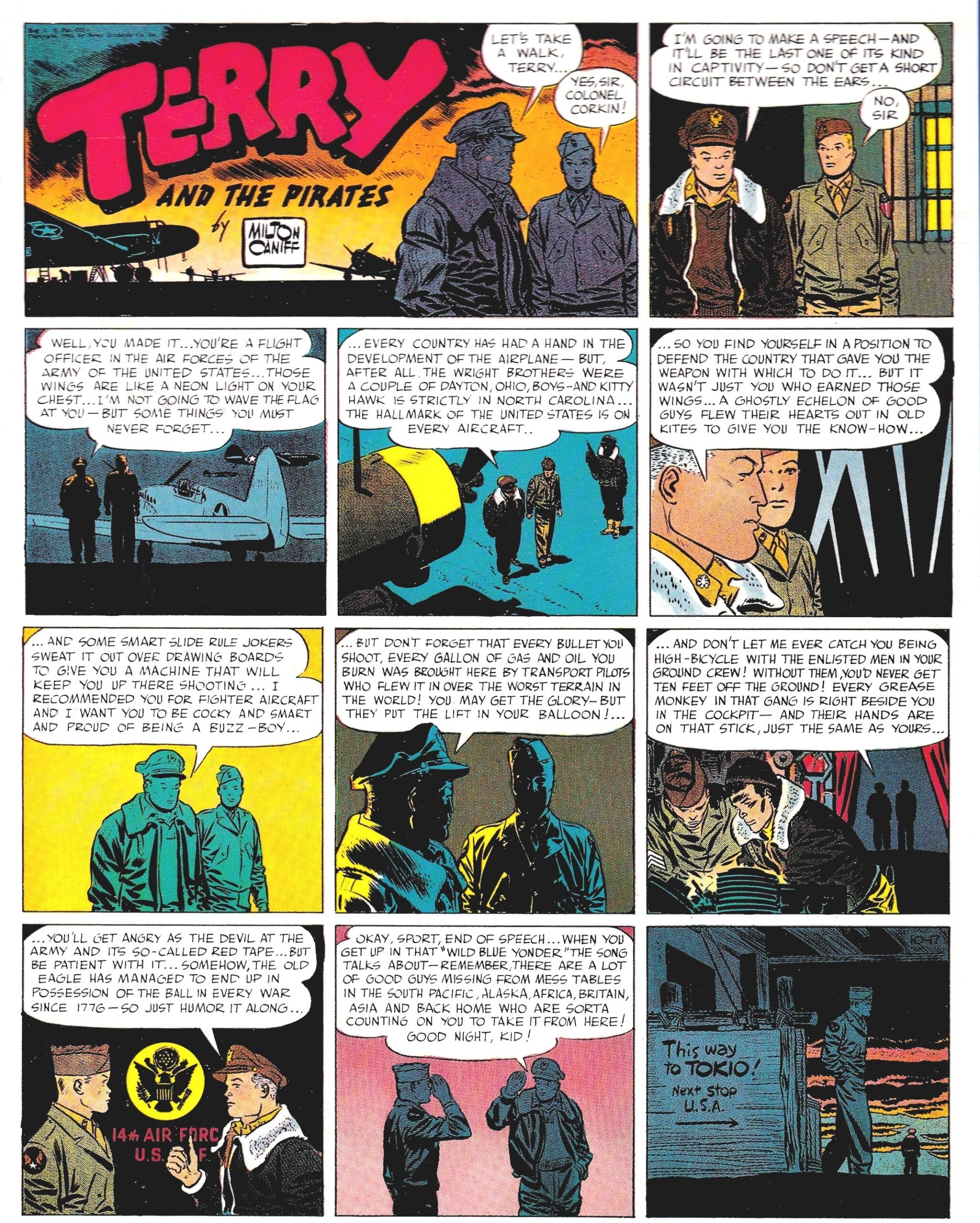
October 17, 1943

Want to see larger versions of the strips? In your desktop browser, simply right-click the image and choose “Open image in new tab” from the pop-up menu. Select that new tab! Now it might still look small, but if you click it, it will expand in size. And, of course, you could always save it and open it up in your favorite image software!
—
Two years later, Terry looked back on the women of his life in this Thanksgiving strip in which Caniff admits: “Of course we know this is just an excuse to get some Thanksgiving pinups to the G.I.s in the occupation zones… okay by you?”
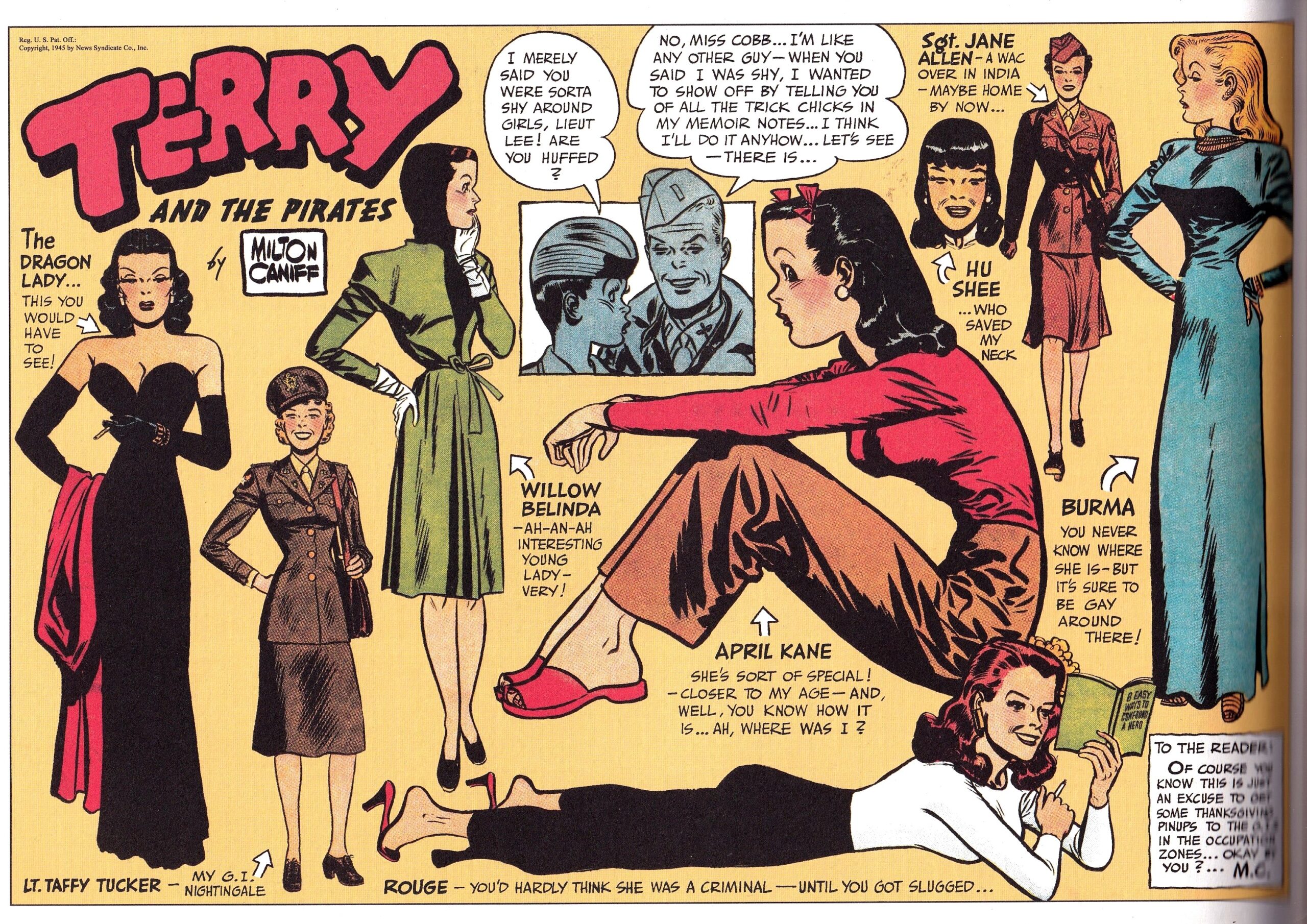
November 25, 1945
The finale for Caniff occurred Dec. 29, 1946 (though the strip would continue on, taken over by George Wunder through February 25, 1973). He was ready to move on to a new strip, this time to one he would own…Steve Canyon (Terry and the Pirates was owned by the newspaper syndicate), but he left with a high point in poignancy.
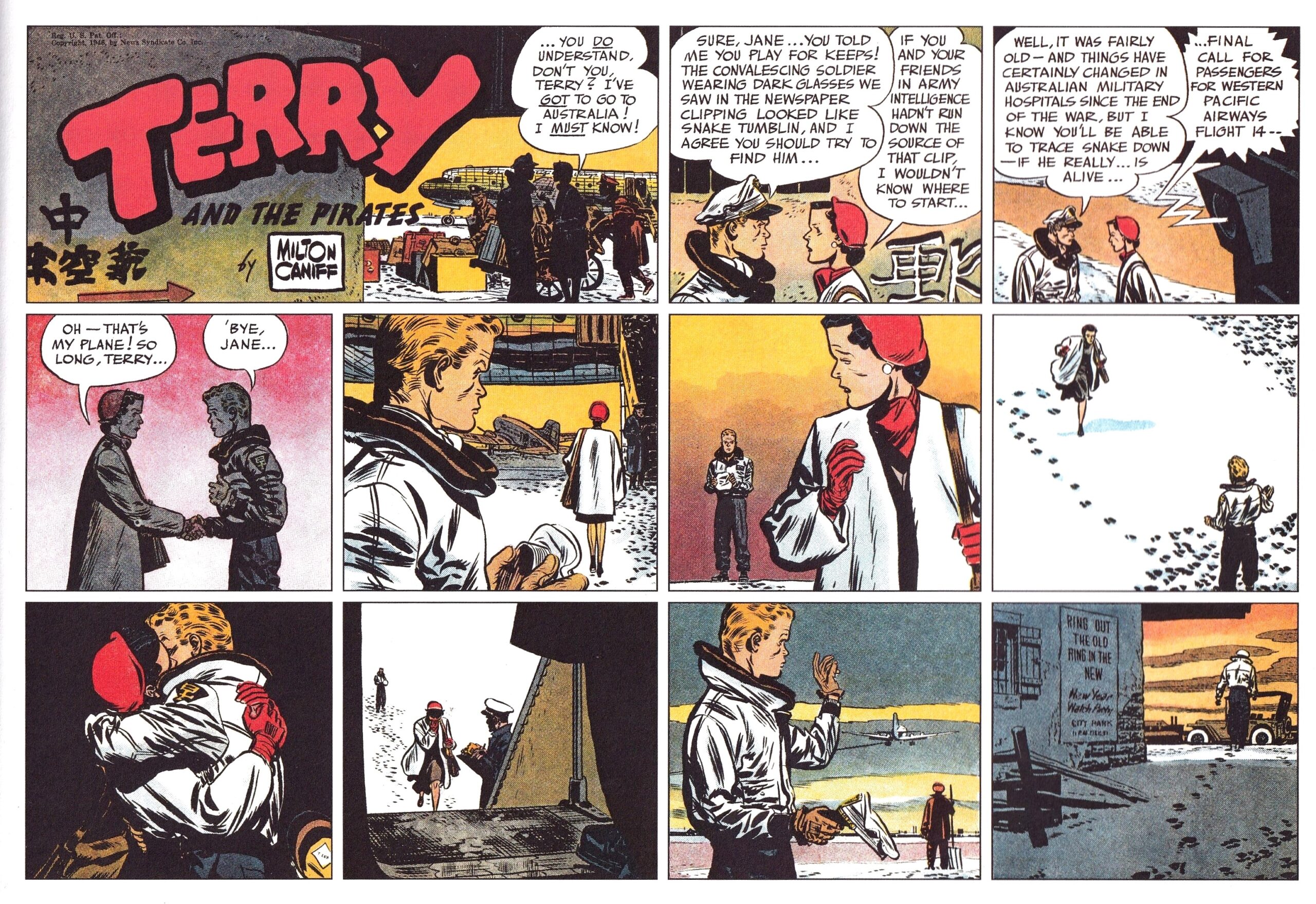
December 29, 1946.
Oh, what a glorious 12 years it was!
But wait — ! During World War II, from October 11, 1942 to January 10, 1943, there was a Terry and the Pirates strip by Caniff running in military bases’ newspapers for United States servicemen. And it was completely different from what appeared the same days in civilian newspapers. The military version was just once a week, so the normal daily storyline would not work in that format, and it featured the blonde femme fatale Burma from the strip interacting on military bases with soldiers. These strips were risqué, suggestive, and downright sexy — just right for servicemen! But while Caniff’s joke-in-one strips were stimulating, they also had tremendous heart.
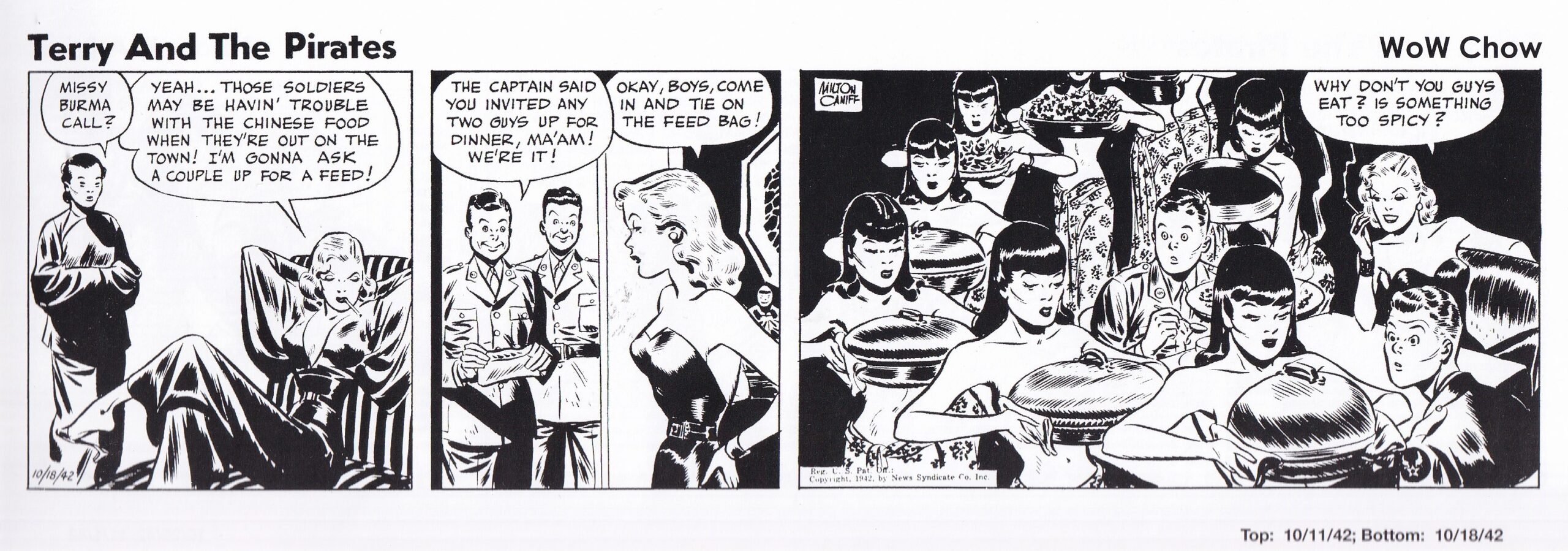
Terry and the Pirates – servicemen edition, October 18, 1942
However, a man who didn’t have humor or heart was a newspaper publisher in Florida who did not take kindly to the fact that he was paying for the exclusive printing rights to the Terry and the Pirates strip in his territory while a rival newspaper was printing the military strip for free (reprinting it without permission from that of a military newspaper in the area)… and for its use of the character of Burma. In order to keep the peace, Caniff created a new strip for the servicemen, Male Call, and Burma was replaced by a friend of hers, Miss Lace.
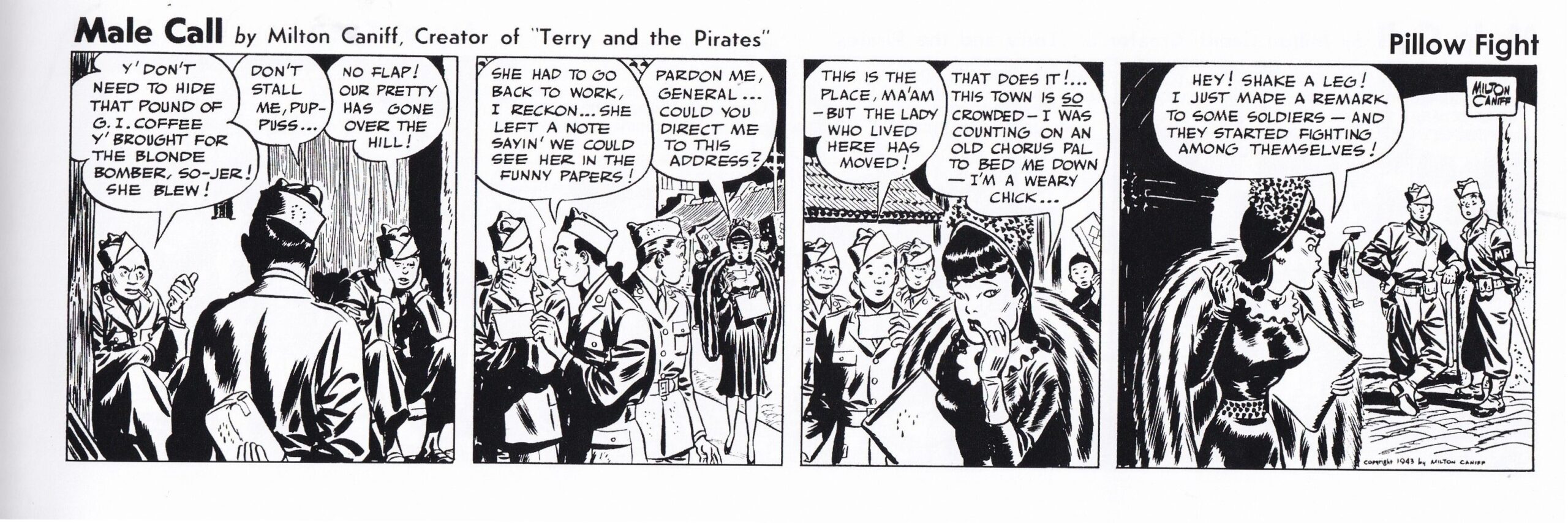
Male Call — Burma out, Miss Lace in, January 24, 1943.
In the spirit of the strip’s “keeping ’em wanting more,” we will delay discussion of Male Call – but we will return with a bevy of great Miss Lace strips (uhhh, newspaper strips, that is) on Milton Caniff’s birthday in February 2025.
—
MORE
— 13 Fabulous FLASH GORDON STRIPS: An ALEX RAYMOND Birthday Celebration. Click here.
— 13 Magnificent Illustrations: A HAL FOSTER Birthday Celebration. Click here.
—
13th Dimension contributor-at-large PETER BOSCH’s first book, American TV Comic Books: 1940s-1980s – From the Small Screen to the Printed Page, was published by TwoMorrows. A sequel, about movie comics, is coming soon. Peter has written articles and conducted celebrity interviews for various magazines and newspapers. He lives in Hollywood.
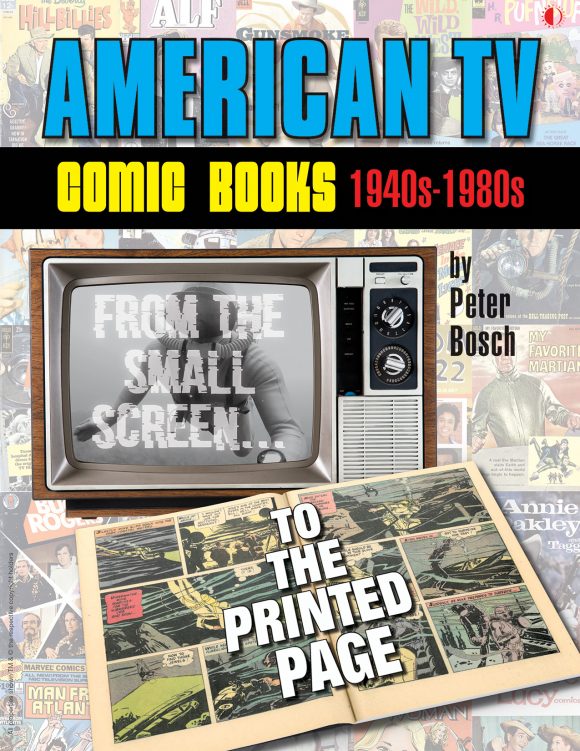

October 23, 2024
I’m amazed these classics aren’t currently in print. It’s a shame. I did find 2 relatively fairly priced editions on eBay however. I’ve said it before, newspaper strips are a lost art.
October 24, 2024
Never read “Terry” but I did read Steve Canyon” growing up. The latter gave Caniff a chance to (sometimes) show his sense of humor, especially in dream sequences. And I loved Miss Lace.
October 24, 2024
My Dad’s favorite comic strip when he was growing up. When IDW reprinted the strips, I bought 2 copies of each book…one for me, and one for my Dad. I’m now buying the Clover Press full size reprints as they are issued.
One of the greatest comic strips of all time…maybe the greatest adventure strip.
They don’t make them like that anymore
October 24, 2024
Clover Press? Hadn’t seen these. Got a link?
October 24, 2024
Found ‘em. Wow. Not cheap. https://cloverpress.us/
November 27, 2024
But worth it, Buck, when you do a side-by-side comparison with the smaller-size books. I was able to get most of them for about $40-$50 each through Target’s “Buy 2, Get 1 Free” sales. As a matter of fact, Target has that sale on again and there are about 5 of the volumes in the sale.